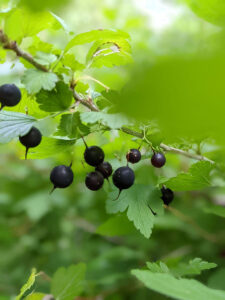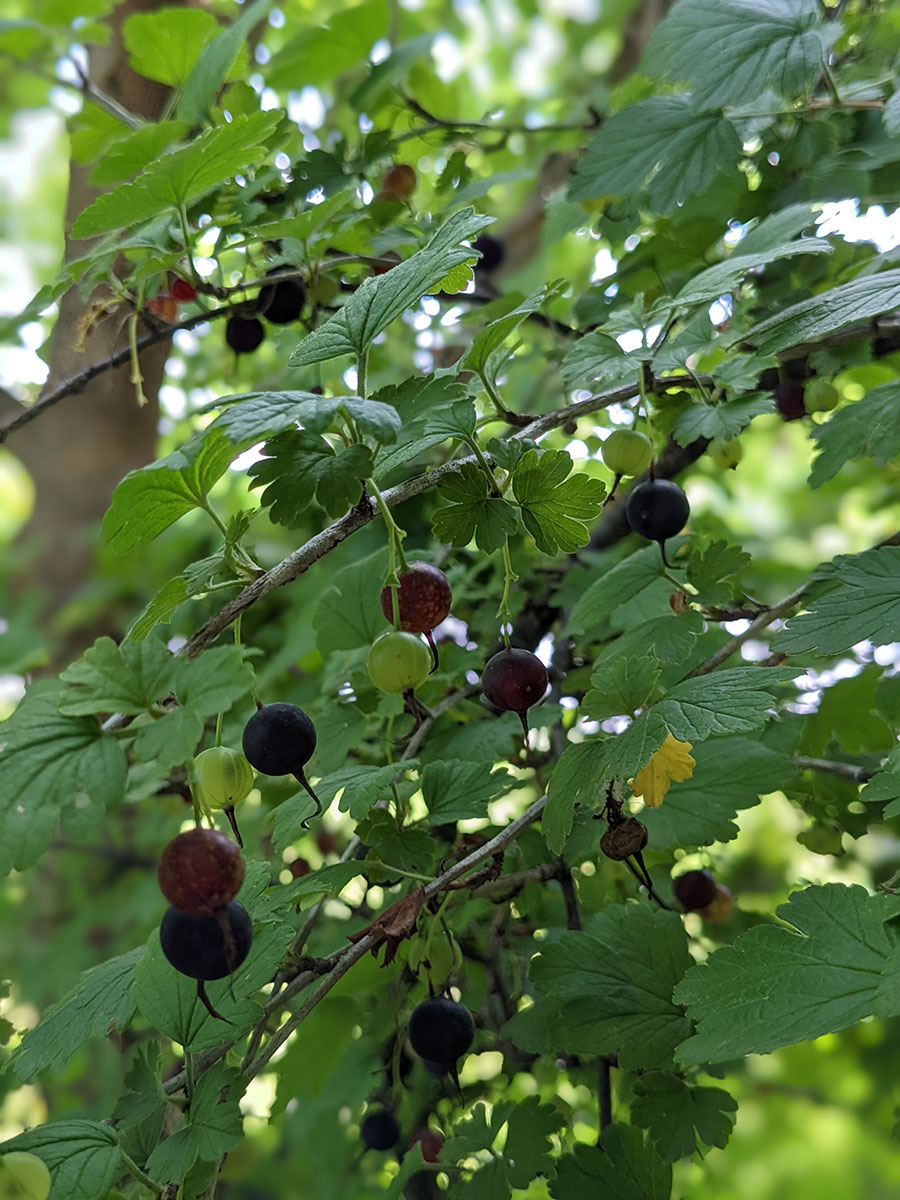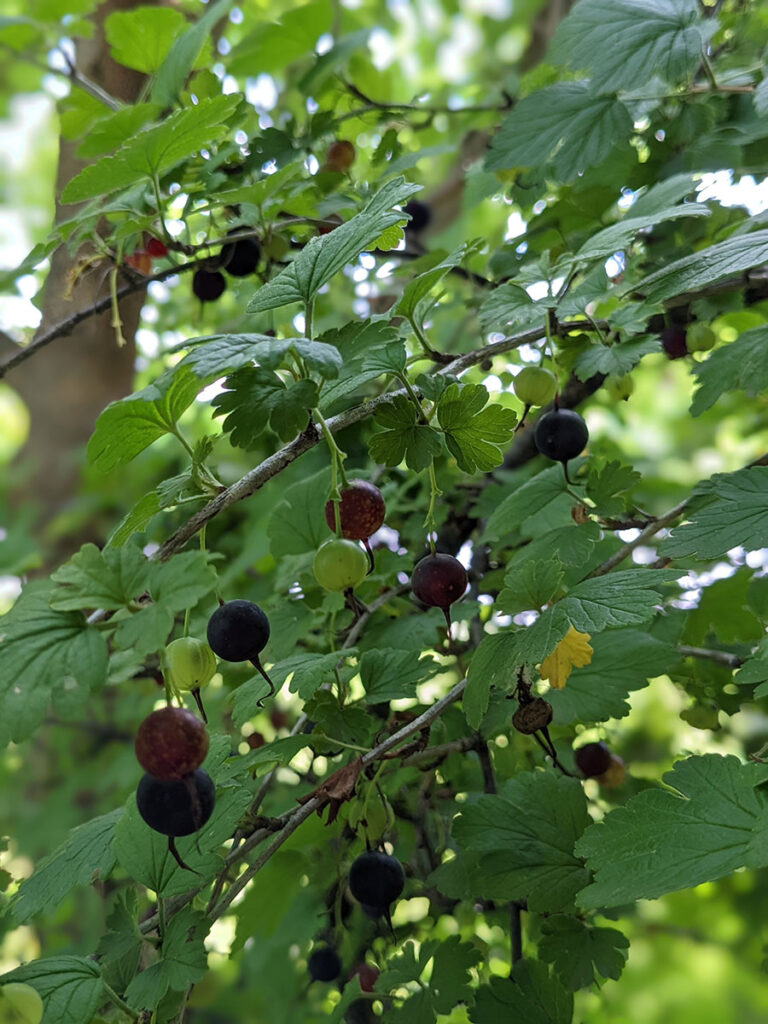 Gooseberries, a member of the Ribes family, are adorable translucent berries that hang hidden and protected under the overhanging scalloped leaves of the shrubbery. No matter if they are found on acres or within a few square feet, gooseberries will grow and do well.
Gooseberries, a member of the Ribes family, are adorable translucent berries that hang hidden and protected under the overhanging scalloped leaves of the shrubbery. No matter if they are found on acres or within a few square feet, gooseberries will grow and do well.
Gooseberries are generally divided into two camps – culinary and dessert. Either may include species, cultivars, or selections within Ribes grossularia var. uva-crispa, Ribes uva-ursi (European types), and/or Ribes hirtellum (American type). Selection of the cultivar should be based on site specific needs. It is suggested to look for characteristics that satisfy culinary needs, using them either for cooking or eating.
There are many great cultivars for any gardener to enjoy. Options include “Achilles,” large, green, red-blushed berries with a grape-like favor; “Hinnomaki Yellow,” large yellow berries with a tasty fruity flavor; “Poorman,” large, long ripening fruit with small thorns; and “Tixia,” with a lovely red fruit on almost completely thornless branches.
It is relatively easy to grow gooseberries if the gardener stays within a few parameters. Hardiness zones tolerated are, in general, USDA zones 3 – 8. There are some cultivars that may easily withstand extremes in any selected site, so it is important to analyze and choose wisely.
Moist, well-drained soils with a pH between 6.0 – 7.0 are preferred and full sun will garner the most prolific harvests if the fruit is protected from direct sun. In the wild, gooseberries will often gravitate to partial sun situations. Take a cue from nature and don’t obsess over a full sun siting.
If there is only room for one plant, don’t worry, as they are self-fruitful, so no extra plants are needed for successful pollination. An application of organic fertilizer in the late fall will see the plants through early spring growth spurts.
Pruning is also low key and easy. It is best to pick a nice, sunny, dry late winter day, sharpen the secateurs, and start removing a few of the oldest of the stems at the base to encourage new stem growth. Prune any dead, diseased, or rubbing branches. What should remain are healthy looking stems in the two- to three-year-old range. You will soon be using and enjoying delicious gooseberries.


0 Comments
Leave A Comment